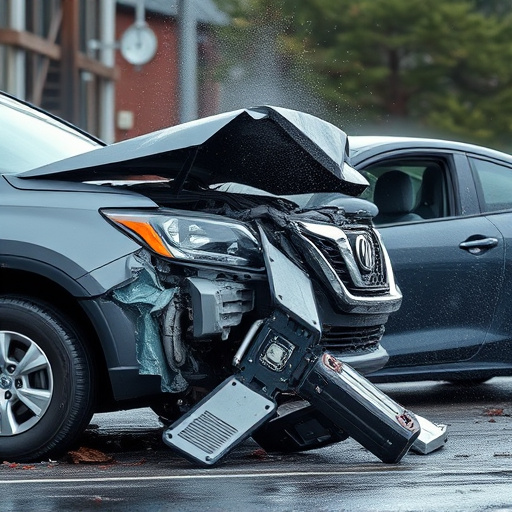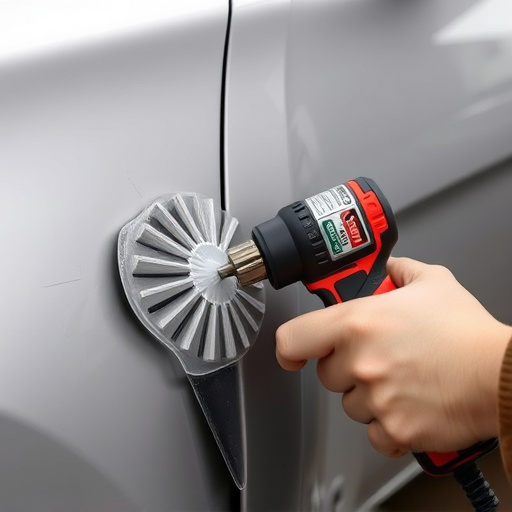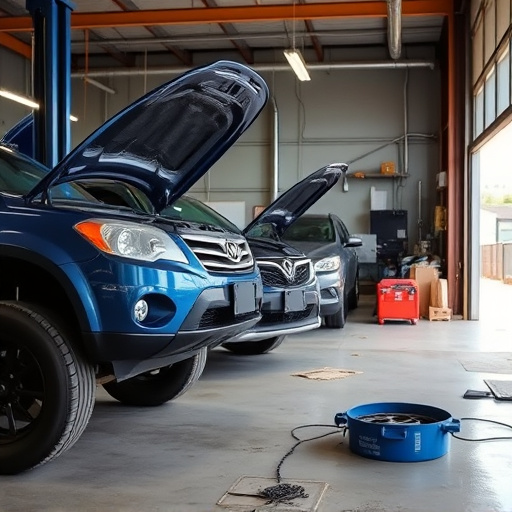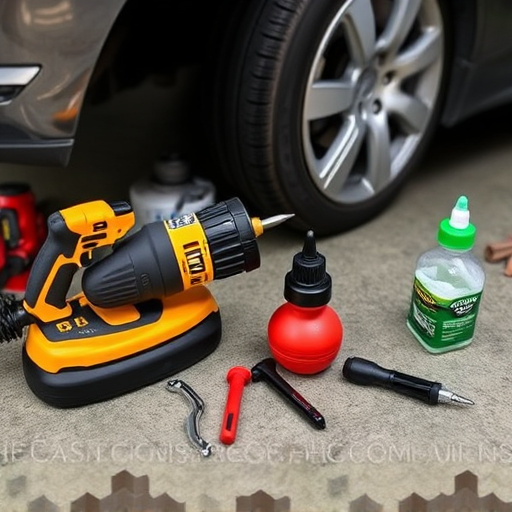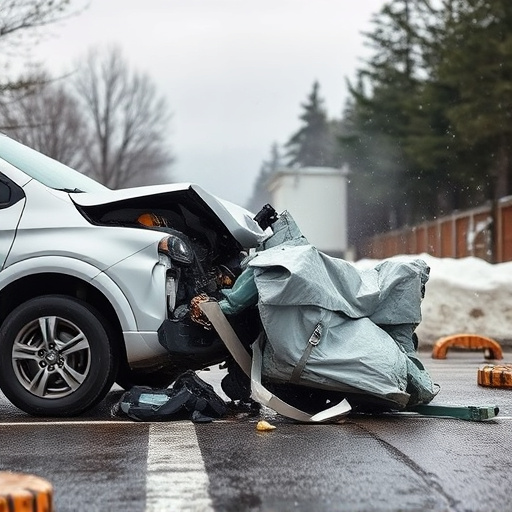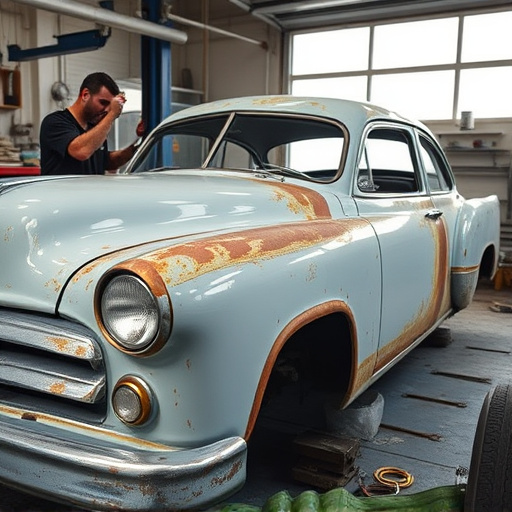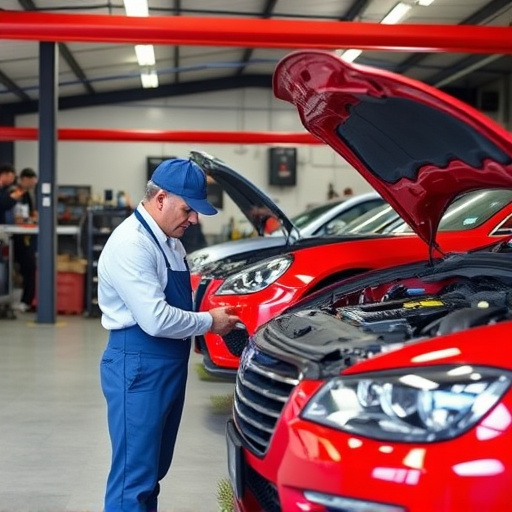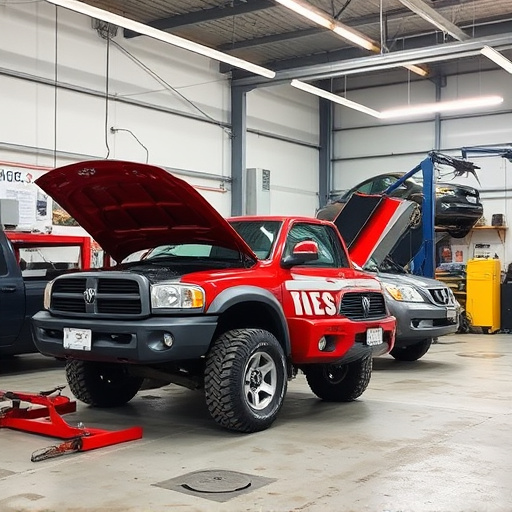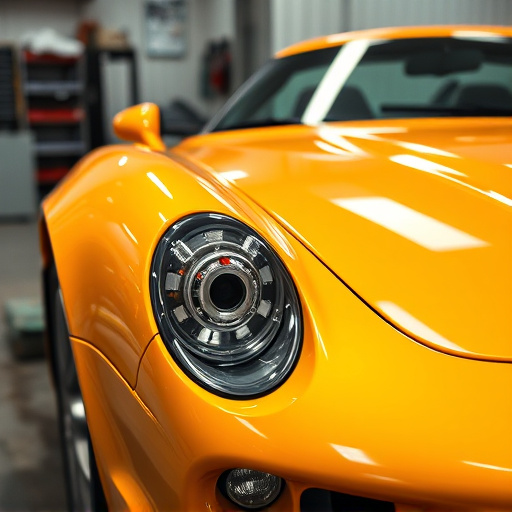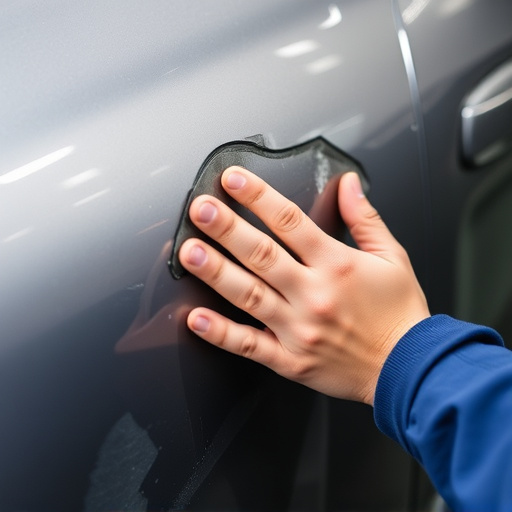Mercedes Night Vision technology enhances driver safety in low-light conditions through advanced cameras, infrared lighting, and software. Proper Mercedes night vision calibration is essential for optimal performance, ensuring clear visuals and improved nighttime driving safety. Regular calibration, similar to auto repair practices, meets OEM standards via benchmark testing, validating ADAS features like lane-keeping assist and collision avoidance. This meticulous process maintains the system's accuracy, reliability, and safety, ultimately enhancing driver confidence.
Mercedes-Benz has pioneered advanced driver assistance systems (ADAS), including its cutting-edge Night Vision technology. To ensure optimal performance, precise calibration is essential. This article explores the significance of calibration and benchmark testing for Mercedes night vision systems using Original Equipment Manufacturer (OEM) standards. We delve into how these rigorous processes validate and optimize the system’s capabilities, enhancing safety and driving experience in low-visibility conditions.
- Understanding Mercedes Night Vision Technology
- The Importance of Calibration and Benchmark Testing
- OEM Benchmark Testing for Optimal Performance
Understanding Mercedes Night Vision Technology
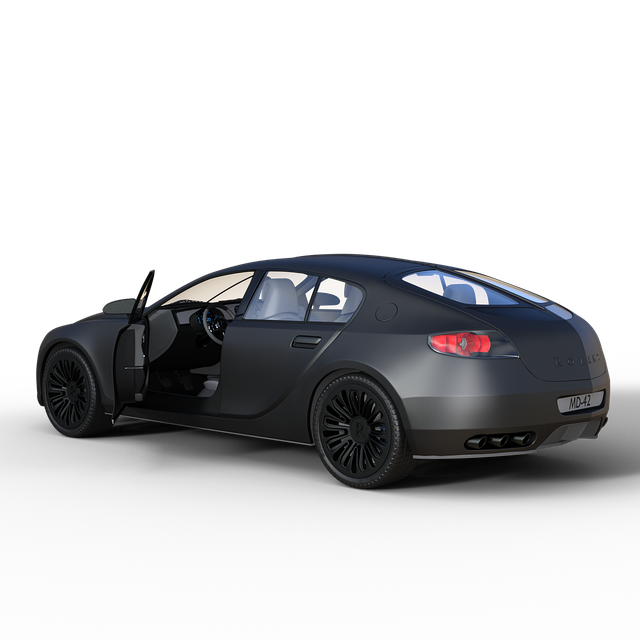
Mercedes Night Vision technology is a cutting-edge safety feature designed to enhance driver visibility during low-light conditions, such as nighttime driving or navigating through poorly lit areas. This advanced system uses a combination of high-resolution cameras, infrared lighting, and sophisticated software algorithms to create a clear, detailed image of the surroundings, making it easier for drivers to detect potential hazards. The technology is integral to the vehicle’s overall safety profile, ensuring that Mercedes owners can drive with confidence, even in challenging nighttime scenarios.
Proper Mercedes night vision calibration is paramount to ensure the system functions optimally and provides accurate visuals. This involves precise adjustments to the cameras and sensors to align them perfectly with the vehicle’s headlights and driving conditions. Regular calibration ensures that the night vision system offers a clear view, similar to how a professional auto body painter would meticulously calibrate colors during the painting process or an auto dent repair specialist adjusts panels to their original state after a car dent repair, maintaining the vehicle’s integrity and aesthetic appeal.
The Importance of Calibration and Benchmark Testing

Mercedes night vision calibration is a critical aspect of modern automotive safety and technology. Proper calibration ensures that the vehicle’s advanced driver-assistance systems (ADAS), including lane-keeping assist, adaptive cruise control, and collision avoidance, function optimally in low-light conditions. Accuracy in these systems can prevent accidents and enhance overall driving experience, especially during night drives or in poorly lit areas.
Benchmark testing plays a pivotal role in this process by providing a standardized reference for evaluating the performance of Mercedes night vision systems. This rigorous testing compares the calibrated system against original equipment manufacturer (OEM) specifications, ensuring it meets or exceeds safety standards. Just as a well-maintained auto glass repair or collision repair center uses precision tools to fix and restore vehicles, benchmark testing ensures that Mercedes night vision systems are accurate, reliable, and safe for road use. This meticulous approach underscores the importance of regular calibration and testing in the automotive industry.
OEM Benchmark Testing for Optimal Performance

Mercedes night vision calibration is a critical aspect of ensuring optimal performance for advanced driver-assistance systems (ADAS). OEM benchmark testing plays a pivotal role in this process, as it sets a standard against which the system’s effectiveness can be accurately measured. By simulating real-world driving conditions and comparing results with original equipment manufacturer (OEM) specifications, technicians can validate the night vision camera’s accuracy, sensitivity, and response time.
This rigorous testing procedure involves exposing the Mercedes’ night vision system to various scenarios, including low-light conditions, obstacles, and moving objects. The data collected during these tests helps identify any deviations from the OEM benchmarks, allowing for precise adjustments to the calibration settings. This meticulous approach guarantees that the vehicle’s night vision capabilities are not just up to par but surpass industry standards, enhancing safety and driver confidence, much like how collision repair specialists meticulously fix vehicle dent repair issues to restore a car’s aesthetics and structural integrity.
Mercedes night vision calibration is a critical process that ensures optimal performance and safety. Through rigorous OEM benchmark testing, manufacturers can validate the effectiveness of their systems, providing drivers with clear, accurate visuals even in low-light conditions. This attention to detail guarantees that Mercedes vehicles remain at the forefront of automotive technology, offering a safer and more enjoyable driving experience night or day.

